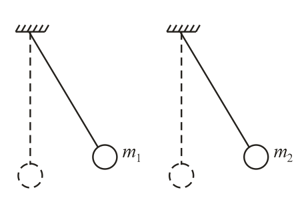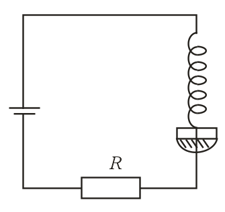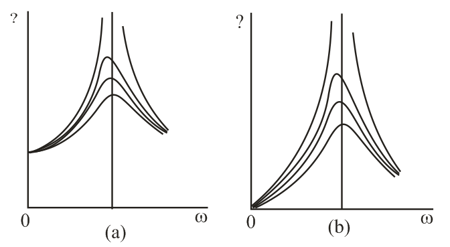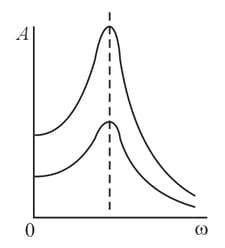An oscillatory circuit consists of a capacitance , an inductance , and a resistance . Damped oscillations set in in this circuit. () How should one change the distance between the plates of the capacitor for the discharge in the circuit to become aperiodic? () How should one change the capacitance and inductance (with the resistance remaining unchanged) for the damping in the contour to diminish provided that the natural frequency of free oscillations remains the same? How will this change the frequency of damped oscillations? () How will the logarithmic decrement of the oscillations change if the resistance and inductance change by the same factor?

Important Questions on Oscillatory Motion and Waves
Two spheres of the same diameter hut of different masses are suspended by strings of equal length. If the spheres are deflected from their positions of equilibrium, which of the two will have a greater oscillation period and which will have a greater logarithmic decrement if their oscillations occur in a real medium with viscosity?

A "dancing spiral" is sometimes demonstrated al lectures. A spring fixed at its upper end is submerged by its lower end into mercury. Voltage supplied by a DC source is applied to the upper end and the mercury. When current flows in the spring, the rings of the spring tend to draw together, the spring gets shorter, and the lower end moves out of the mercury. The current ceases, and the lower end is again submerged in the mercury. The process repeats itself. What oscillations does the spring perform in the process: free, forced, damped, or self-oscillations?

Which of the two diagrams, Figures, represents the dependence of the amplitude of displacements in forced oscillations on the frequency of the driving force and which represents the frequency dependence of the velocity amplitude? In what parameter determining the oscillation conditions does each curve represented in Figures differ? What parameters determine the intersection of each curve with the vertical axis in Figure and the position of the maximum?

The curve depicting the dependence of the amplitude of forced oscillations on the frequency of the driving force in a medium with no resistance tends to infinity as . Why is this situation meaningless not only from the physical standpoint but also from the mathematical standpoint? How does a system oscillate in a medium that has practically no resistance?
Two forced oscillations with the same natural frequencies have amplitudes that differ by a factor of for all values of the frequency of the driving force. In what parameter, among the amplitude of the driving force, the mass of the oscillating object, the elasticity coefficient, and the resistance of the medium, do these systems differ? It is assumed that these systems may differ only in one parameter.

